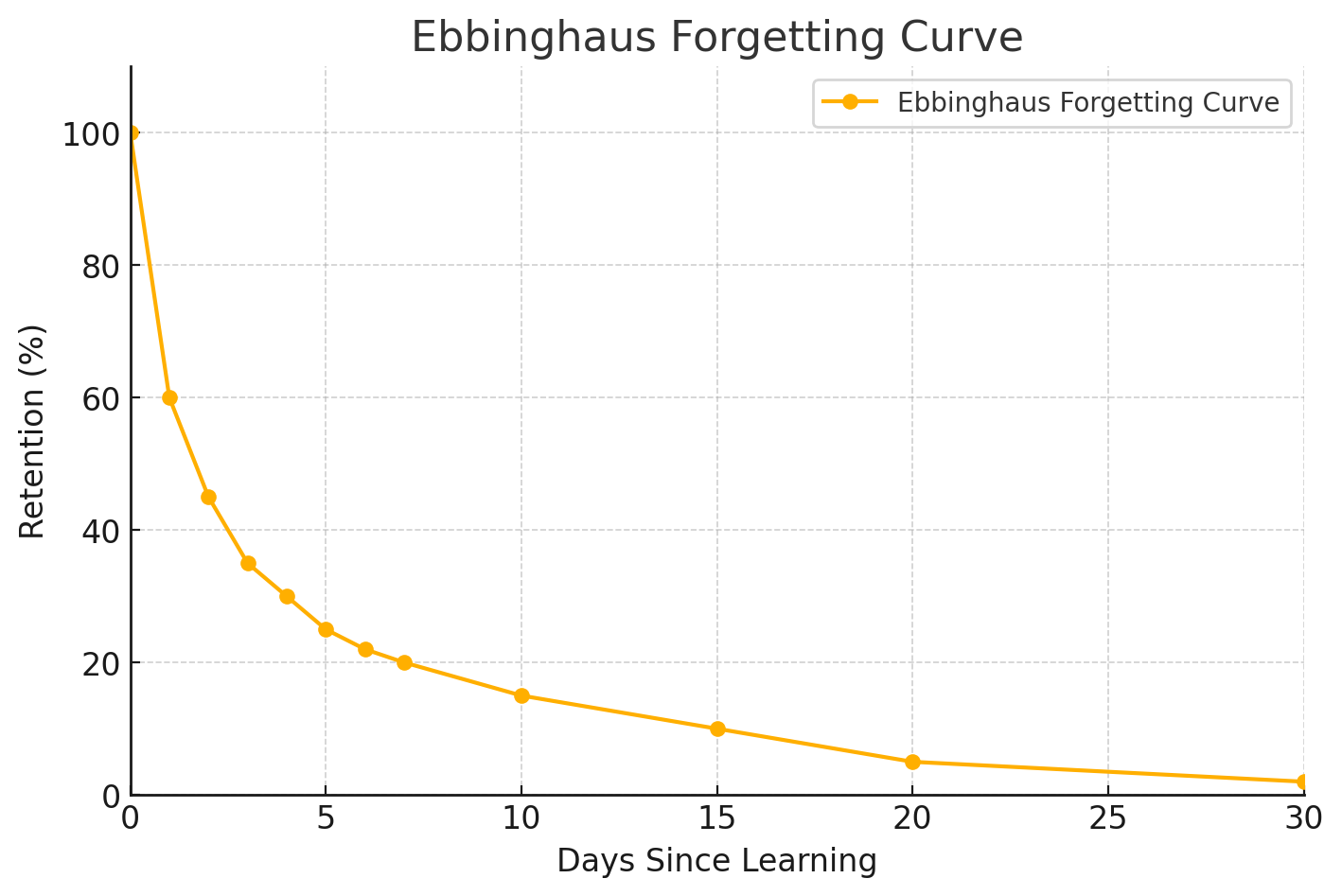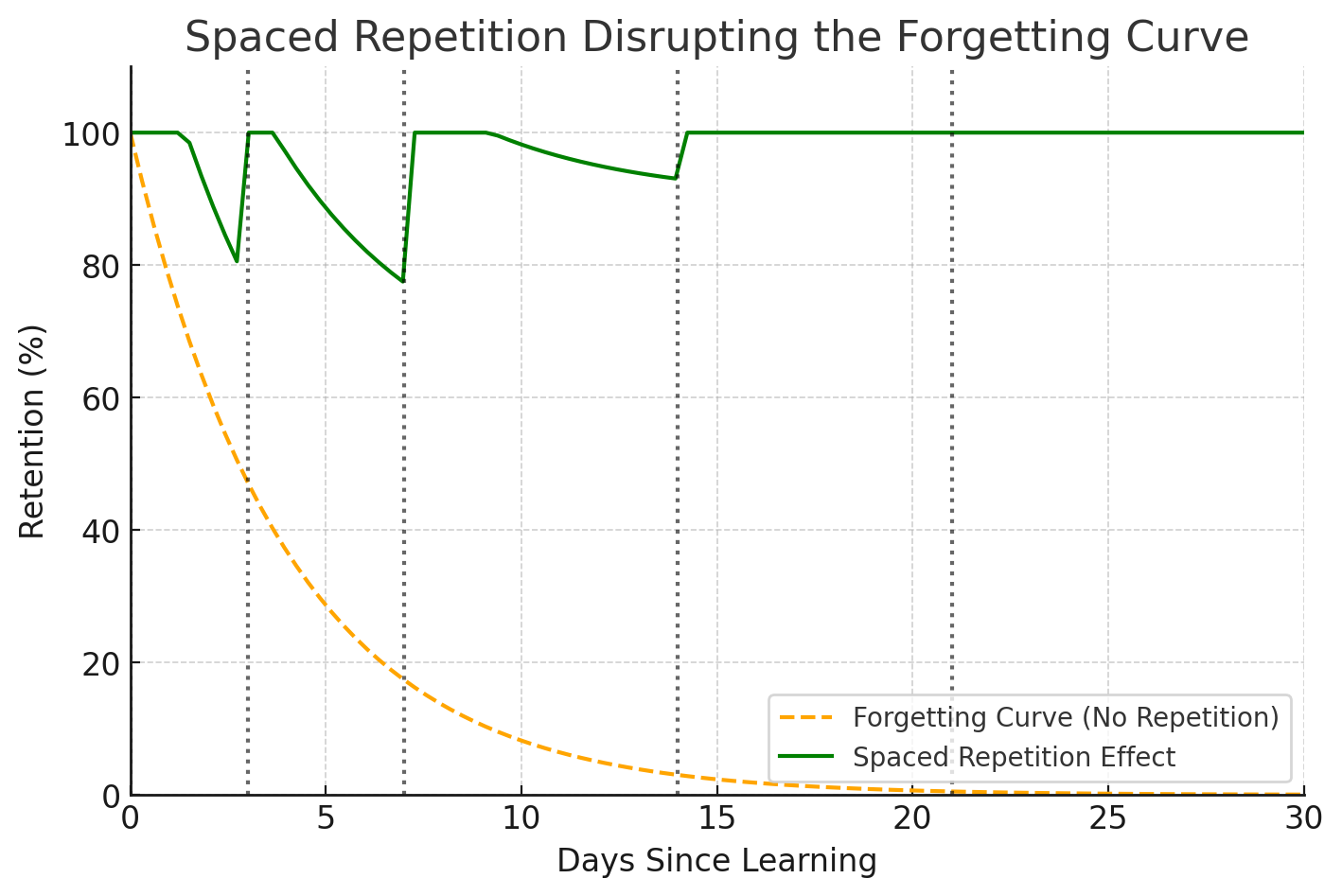Enhance Learning through Spaced Repetition
Many students lack effective study skills, mistaking memorization for true learning. Spaced repetition—a proven cognitive technique—reinforces knowledge over time, boosting retention. This article explores how TRIO students can use this method to study smarter and achieve lasting academic success.

Imagine trying to fill a leaky bucket with water. That’s what learning without review looks like—knowledge drips away as fast as it’s poured in. Spaced repetition fills the leak in that bucket, strategically reinforcing information before it slips away. This article explores how this technique can help TRIO students strengthen retention, boost academic performance, and reduce study-related stress.
What Is Spaced Repetition, and Why Does It Work?
Spaced repetition isn’t just a fancy study hack—it’s backed by brain science. This technique leverages memory consolidation and neural plasticity by revisiting material at increasing intervals. Each review strengthens neural pathways, making recall faster and more reliable.
German psychologist Hermann Ebbinghaus mapped the forgetting curve in 1885, proving that without reinforcement, memory fades at an exponential rate. Spaced repetition interrupts this decay by reintroducing material just before it’s forgotten. Think of it like watering a plant at just the right time—it keeps growing instead of wilting.

Studies show that reviewing material within 72 hours helps retain up to 90% of it. Long-term, spaced repetition outperforms cramming by a factor of two or three, making it a highly efficient learning method. Spaced repetition can help TRIO students in the following ways: reinforce foundational knowledge, reduce cognitive overload, and improve academic outcomes.
Active Recall + Spacing: A Memory-Boosting Duo
Two cognitive powerhouses—active recall and the spacing effect—work hand in hand to strengthen learning.
- Active recall involves pulling information from memory, rather than passively reviewing notes. It’s like weightlifting for the brain: the more you retrieve knowledge, the stronger it gets. Research confirms that self-testing (via flashcards, quizzes, or summarization) solidifies learning far better than rereading.
- The spacing effect has shown that spreading study sessions over time—rather than cramming—drastically improves retention. A 2024 study found that spacing out review sessions not only enhances memory for isolated facts but also strengthens connections between related concepts.
Together, these techniques create an ideal learning cycle: retrieve, rest, repeat. For TRIO students, practical applications could include flashcards with increasing review intervals or quick, low-stakes quizzes during tutoring sessions to reinforce learning without pressure.

How to Implement Spaced Repetition in TRIO Programs
Applying spaced repetition effectively requires a mix of strategy, structure, and the right tools.
- Start Small, Scale Up – Begin with short review intervals (e.g., one day, three days, a week) and gradually expand. This aligns with the forgetting curve and ensures students revisit material at optimal times.
- Use Active Recall Methods – Flashcards, quizzes, or the Leitner system (which prioritizes difficult topics) enhance retention by forcing the brain to retrieve information.
- Leverage Technology – Tools like Anki and SuperMemo automate review schedules, ensuring material is reviewed just before it’s forgotten.
For TRIO programs, these strategies can transform how students retain knowledge, making learning more manageable and effective.
Tech Tools That Supercharge Spaced Repetition
Digital tools make spaced repetition more accessible and adaptive. Platforms like Anki, Quizlet, Mochi, and iDoRecall use algorithms to personalize review schedules.
- Anki adjusts flashcard timing based on user performance, ensuring review happens at the perfect moment.
- Mochi integrates note-taking and flashcards, embedding multimedia elements to aid comprehension.
- iDoRecall links flashcards to external resources like PDFs and videos, offering context-rich review experiences.
- Quizlet gamifies learning with automated quizzes and spaced lesson delivery, making training engaging and effective.
Studies show that digital platforms yield better retention than traditional study methods, saving students time while deepening comprehension.
Challenges and Solutions in Implementing Spaced Repetition
Implementing spaced repetition has its challenges: time constraints, cognitive load, and ingrained educational norms. Many students, particularly those balancing work and family, struggle to allocate time for spaced learning. Misconceptions that longer study sessions improve retention further discourage effective practices.
Memory gaps also hinder engagement—retrieving older material can feel overwhelming, reducing the effectiveness of spaced practice without structured review strategies. Additionally, traditional curricula emphasize rapid content coverage over long-term retention, limiting the adoption of spaced learning.
TRIO programs play a critical role in providing students with exposure to this effective study technique, equipping them with the resources and structure needed to overcome these challenges. When applied consistently, spaced repetition enables students to develop deeper, long-lasting knowledge.
Conclusion
By strategically timing review sessions, TRIO students can dramatically improve retention, reduce stress, and build stronger academic foundations. With tools like Anki, Quizlet, and Mochi, the path to academic success becomes more structured and accessible.
Integrating spaced repetition into TRIO programs is a powerful way to empower students, enhance learning, and drive academic success.
Resources
The following resource on spaced repetition has been created to be shared with students.




